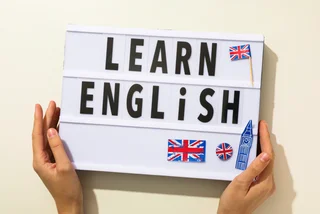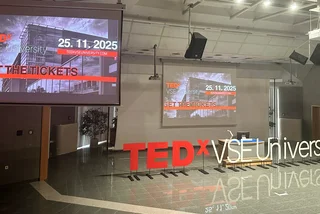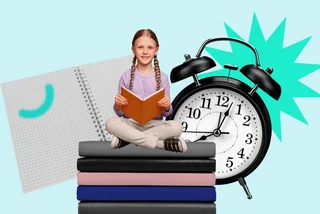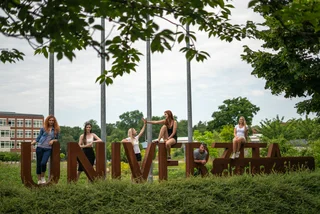My daughter turns 6 in February, which means she will be eligible to enter first grade in the Czech Republic in September, 2012. Why did we decide to put our kids in the public education system? Lots of reasons. We’re long term expats who intend to stay, and the kids (and us, vicariously) will better integrate into Czech society via going to a Czech school. Their Czech language skills will advance faster than they have thus far (they’re far from fluent). Attending a Czech school means they won’t suffer as much “classmate turnaround”, which is typical for “third culture kids” in international schools. This constant flux of classmates and friends can make it difficult for kids to form lasting relationships, because they are so used to people coming and going. As a mom, I’m very committed to being involved with our chosen school – and this school will be enormously educational for the whole family. So making the right choice is important.
But where to begin? I don’t know many foreign families who opt for state schools. I’m blazing my own trail here, and writing this article to help others in a similar situation. There is only one reference I know of to help us non-natives navigate the system, published by class acts. This is full of interesting facts, like: “Czech education is guaranteed [for] all foreign residents, not just EU” and “Even if you plan to defer enrollment, you still have to register.”
Late fall is the time of “open days”, where you can check out the facilities and meet teachers. And the registration deadlines are in early winter. The first thing I did was visit this website and read through all schools that looked interesting – either because they were conveniently located, or because they offered something special. “Special” things expat parents should be on the lookout for include the phrase “s rozšířenou výukou jazyků”, which means extensive language education. This often means the school begins teaching English in the first grade. That can make a world of difference to a non-Czech speaking child in a new environment – the idea that, “hey, everyone is working on learning something – and at least they can appreciate that I’m good at something that they’re pursuing as an academic goal”. Life might be hard for a few months – but English lessons, at least, should be a breeze. You can also find comprehensive lists of schools and their websites here.
How to use the web to research a Základní škola
Thankfully, most schools have websites. As an example, I will use the site of Bila (http://www.zsbila.cz/), a Prague 6 school popular with mixed-nationality families. On the menu, I see a choice for “Školní akce.” Some websites may say “Kalendář akcí” or “plán školního roku” instead. Other times I’ve had to look under “Aktuality”. Click and it takes you to the calendar year or list of upcoming events. Somewhere in the time of Listopad (November) and Prosince (December) you should see “Den otevřených dveří” This is open house day. Make a note of the day. The other important date is “Zápis do prvních tříd.” This is the day when you sign your child up to begin first grade there. You are not guaranteed a place in the school of your choice. Yet you are intended to register just with your preferred school. When you get declined, what then? Let’s assume schools don’t compare lists and just keep our bases covered; that’s my unofficial advice.
Next I try to research the school. The Bila website has an English flag on it! It just leads to a Google Translate version of the site – but it’s still a positive sign. Then I read about various projects the school is involved in, like Comenius – Countries in School, which encourage mutual understanding between member countries, and all communication takes place in English. Another positive sign. I like to see a school that has been written about in the press “Napsali o nás” In this case, I find a link to a newspaper article and I like what it says. I find another piece about how chefs will teach the school’s cooks to make more plant-based foods.
This is great. Now I just need to mapy.cz the address to see if it’s feasible – click on contacts, (at this point, un-click Google translate – or you’ll get “White street” as the address and there’s nothing like that in Prague 6!) Great news – it’s close. I’ll be going to open day – and bringing my kid with me 🙂
I used this process to get the goods on 5 of my top choice schools in Prague 6, and ended up with this calendar of open days and what I like about the school:
Nov. 24: Hanspaulka – Location, sports, size.
Dec. 1: Pod Marjánkou – “sister” school in DK.
Dec. 8: Marjánka – Very lingual.
Dec 12: Červený Vrch – Nice facility, Outdoor heated pool.
Dec. 15: Bílá – International, location.
Jan. 9: Emmy Destinové – Website in 5 languages!
It’s important to check the exact times. Some schools posted their “open doors” time as 10:00 – 11:40, while others gave a generous 8:00 – 18:00. Your role in all this is “zájemce” or “interested party.”
If you really can’t find the info, send an email to the school’s address with something like this:
Dobrý den,
Nedaří se mi na vašem webu nalézt informaci kdy bude Den otevřených dveří. Mohli byste mi prosím poradit?
Děkuji,
Eva Howlings
Next steps!
Go to the open days. I’ll write up what I experienced and what to expect. If possible, find out what Christmas events the school is putting on. Many schools hold an annual market. On Bila’s “Skolni Akce” page, listed under Prosince, I see “Vánoce v Bílé – Vánoční jarmark”, meaning “Christmas at Bila – Christmas Market”. Events like these are generally open to the public, and it’s a great way to get a sense of how the school feels socially. Are parents chatting warmly with teachers? Are members the administration present and engaged? What is the response when you introduce yourself? Are kids running around – screaming and laughing, like kids should be – or are they hiding behind their parents’ legs? Take it all in and trust your instincts.
You can also try to ask teachers about the schools’ “admittance test” policy. This differs from school to school. Prospective kids are interviewed by teachers, about anything from counting to tying their shoes. It’s less about what they know and more about evaluating how comfortable a child is in the presence of a strange adult, and whether they are socially ready for a school environment. Keep in mind there is no focus on Czech preschoolers being reading ready – so it’s not an academic test. My preferred school, Bila, outlines their requirements for future first graders:
1. Jump rope. Play with a ball: gross motor skills.
2. Draw. Turn a knob: fine motor skills.
3. Hold a pencil properly; draw straight & wavy lines.
4. Complete a memory game or puzzle: visual perception & memory.
5. Auditory perception.
6. Count to 10.
7. Understand the concept of yesterday, today & tomorrow.
8. State name and address. Very important is correct pronunciation.
9. Greet adults politely; don’t be afraid of teachers or classmates.
10. Dress self, eat with cutlery, keep school bag organized.
11. Purchase something in a shop, take a message, and get home on a tram.
I can’t imagine how they’ll test a child who can’t tie a bow, doesn’t know the name of her street and can’t even speak Czech – but I will certainly keep you posted.
This article covers basic issues like how to use the internet to find out about schools and how to get a foot in the door. in the second article, I will share my experiences with going to several “Open Days” and look at the process of registering with our chosen school.
Related articles
- Czech Teachers to Get a Massive Pay Increase this Autumn
- Czech Teachers Have the Worst Salaries In the World
- Czech-Designed 3D Heart Is Revolutionizing Classroom Learning
- Czech Republic among Best Places In the World to Teach English In 2017
- Prague among Best Cities In the World for International Students












 Reading time: 6 minutes
Reading time: 6 minutes 


















